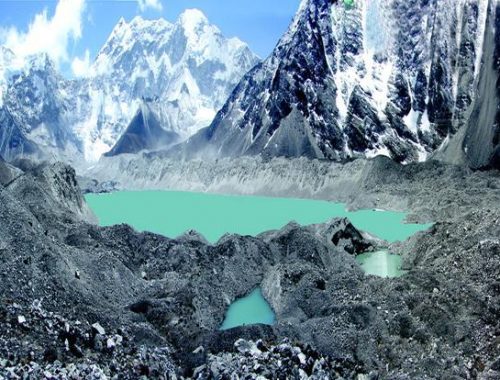Reconstructions of past responses of vegetation from different ecosystems can predict the impact of climate change on weather and other environmental parameters, scientists said at the 6th Asian Dendrochronology Conference being held at the Birbal Sahni Institute of Palaeosciences in Lucknow. This is the first time that the conference is being held in India. The studies presented and deliberated at the conference were mostly from different ecological niches within Asia.
Dendrochronology is the study of tree rings that hold a wealth of information about not only a tree’s past but also that of the ecosystem in which it lives. Tree rings are layers of growth that a tree acquires in a year. The colour of old wood is always darker than a comparatively newer wood which creates a contrasting pattern of rings year on year. In the years of good growth, characterised by a healthy supply of resources, the ring is thick. It is thin when the ecosystem has dearth of resources. Trees can be great records for past and recent climates, much better than climate records as their density in a region is much greater than climate observatories and their information close enough to actual conditions.
Many of the presented papers showed a close relationship between temperature, precipitation and tree ring width. For instance, a paper on the tree growth rates in the Hengduan Mountains of South West China by Ze-Xin Fan from the Chinese Academy of Sciences (CAS), showed reduced coniferous tree ring growth under recent warming and drying climate, a phenomenon known as divergence. The paper further stated that tree growth in high latitudes and elevations is sensitive to temperatures in summer and winter season whereas tree growth in lower latitudes and elevations is sensitive to moisture in the spring season.
Another study, which brought out a 226-year long chronology of teak trees from southern Myanmar, showed that intense floods and droughts have periodically occurred in the region and their continuation or even intensification in a warming climate can lead to adverse effects on traditional agriculture and forest based economies. The authors also correlated the extreme events to large scale climate phenomenon like El Nino Southern Oscillation (ENSO), Pacific Decadal Oscillation (PDO) and sea surface temperatures of the Pacific and Indian Ocean.
Eryuan Liang, also from CAS, showed that competition among vegetation species that grow close to trees at the upper-most altitudes, often known as the treeline, could counteract the general upward movement of trees due to global warming. His research analysed the treeline position of 20 plots and found that the treelines had shifted by 0.56 m-1 m in the past 150 years. Another interesting study by Somaru Ram from Indian Institute of Tropical Meteorology, Pune, showed that increasing heat index and mean temperature during summers in Sikkim has had an adverse effect on tree growth due to high potential evapotranspiration—the rate at which plants loose water through their leaves. Such studies help scientists understand the impact of climate change at the local scale and a network of such chronologies can also help them understand climate change impacts across countries and continents. The researchers also called for the establishment of enhanced tree ring chronology networks for better cooperation.




